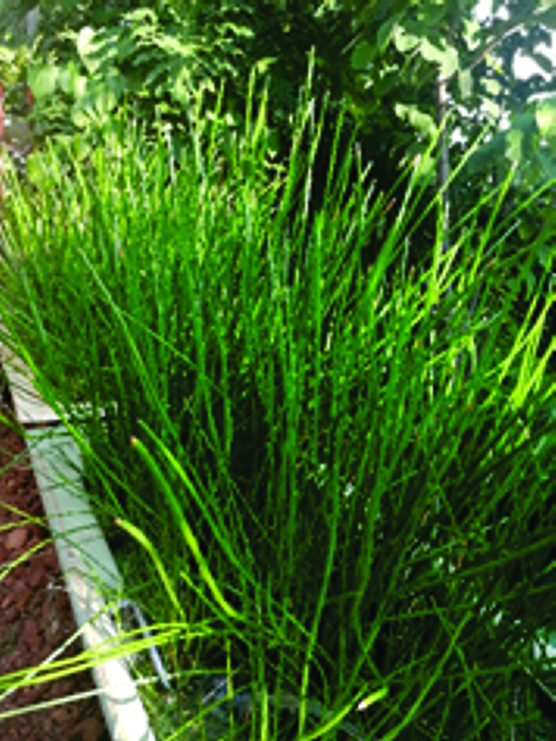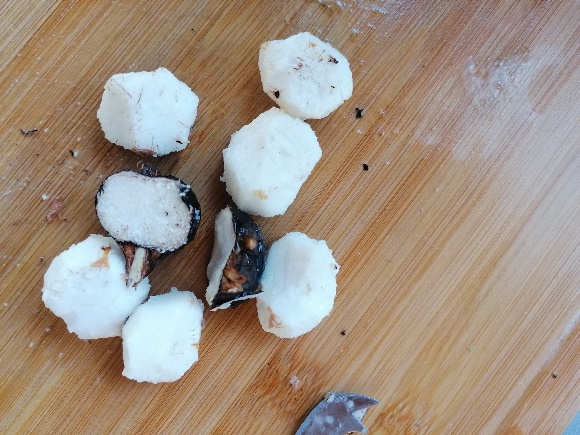This article is part of a series “orphan” and unusual crop species, food and utility plants that were important to people before the simplification of the food supply that accompanied the spread of industrial agriculture, and which can, and should, be important again in a more ecologically sensitive, small-scale farming community. By University of Pretoria horticulturist Jason Sampson.
There are well over 20 000 known species of edible plant worldwide. However, due to globalisation, colonialism and the mechanisation of agriculture only about 20 provide 90% of our, and our domestic animals’, food needs.
Many edible plants are wild, undomesticated and not really suitable for production. Yet there are dozens of domesticated or semi-domesticated crop species in Africa alone that can be grown easily and productively by smallholders. These can increase the food variety and security of the farmers’ families and livestock. And, they will readily find a market in speciality, health food or ethnic markets without the grower competing with large, established farms.
Orphan crops
“Orphan” crop species are food plants that were important to people before the simplification of the food supply that accompanied the spread of industrial agriculture. These can, and should, be important again in a more ecologically sensitive, small-scale farming community.
One such crop is the Water Chestnut (Eleocharis dulcis).
It is better known in the East, where it is grown in rice paddies as a companion plant to the staple, and used in multiple recipes and food types from curries to stir fries. This plant is found growing wild along the Eastern parts of South Africa, particularly KwaZulu-Natal, and all through Tropical Africa.
It is not known if it was ever cultivated as a crop in Africa. But it would without doubt have been known as a forage food to traditional peoples within its range, where it could be found growing along river banks, the shores of lakes and in pans.

This is a highly productive crop, particularly considering the minimal input needed for growth.
Waterlogged ground
All the plant needs is waterlogged conditions, good soil and full sun, although addition of nitrogen containing fertilizer can increase yields. The water it needs to grow in need not be moving. This allows for cultivation in containers such as baths or modified flow-bins. Unsurprisingly, the plant also lends itself perfectly to aquaponics.
When one hears the name “chestnut”, one might assume that the crop is some kind of tree, but water chestnut is an unassuming grass like plant. It has hollow, cylindrical leaves and a spreading habit under ideal conditions.
The edible part of the crop are its tubers which are visually very similar to true chestnuts. They have a sweet, coconut like taste and texture.

This is an aquatic plant and although it can grow under irrigation, for full production it needs to be grown in relatively stone free soil saturated with water. The water depth can be up to about 5cm but it is not necessary to have standing water around the plant’s crown. The largest tubers are produced in the top 30-50cm of soil.
Fresh tubers
Plants are grown from fresh tubers which are planted in very early spring. The tubers are very hardy, and often sprout in August with warmer weather.
The secret to full production is to take advantage of the fact that the plant spreads like a grass in the earlier part of the growing season. The months of September to December are spent spreading to fill an area, the months of January to March are spent with the plant becoming as dense as possible in that space, and April-May are spent forming the winter survival tubers, which are the largest and most succulent. The plants die down with the first frosts, and harvesting can begin.
Planting density
Best planting density for maximum production under normal conditions is six to eight tubers per square metre. One can feed with nitrogen containing fertilizer ever six to eight weeks from September to March.
Resist the temptation to split your plants when growing. Maximum production is a result of interaction between surface area covered and density of the final clump, once planted at the optimal starting density let the plants grow until harvest season. They grow so thickly they seldom need weeding.
Productivity in mass plantings can approach or exceed that of potatoes, roughly 40 tons per hectare.
The crop is ready to harvest at the end of the season when foliage dies down.
The plants are grown from fresh tubers, and for propagation purposes these keep best in damp soil. Always save a section of your growing area unharvested with tubers in place for replanting in spring.
One can supply tubers packed in wet coir in the winter months, and these are best planted soon after arrival.
Chinese cuisine
Water chestnut tubers are extremely popular in Chinese cuisine, and keep their crunchy texture when cooked. There are myriad ways to use them, from gluten-free pizza base recipes to traditional stir-fry. They can also be used as a potato substitute, adding a sweet, coconut like taste to any meal, although some prefer them sliced when used fresh as the crunchy texture is novel in a stew.
Tubers are peeled before use, and can be eaten raw, boiled, fried or dried and made into a flour.
Sources of fresh water chestnut for consumption are few and far between in South Africa, and most of the local culinary demand is filled with canned tubers, which cannot compare with the fresh product.
A ready market will be found at Chinese grocers and delicatessens, among others, and the opportunity exists for value added produce such as water chestnut flour, or frozen chestnuts, to name two possible products only.
Few crops can produce as well in limited space, so if you have space that can be used to incorporate this crop into your growing, whether in ponds, dams or suitably modified large containers, water chestnut propagation is highly recommended.
However, just a last word of warning: ducks and geese are one of the few “pests and diseases” one can expect to affect these plants, and they will uproot and eat any tubers they can find. Suitable protection can be as simple as chicken wire over your grow beds, but be aware of water-fowl when growing water chestnuts!
Main image: Freshly harvested water chestnuts on left, with true chestnuts, Castanea sativa on right.
For more information on this, or other orphan crops, contact Jason Sampson at jason.sampson@up.ac.za


Please tell me the period of viability of the peeled corm?
I have been given some but they are hard like stone, so i think they are not plantable.